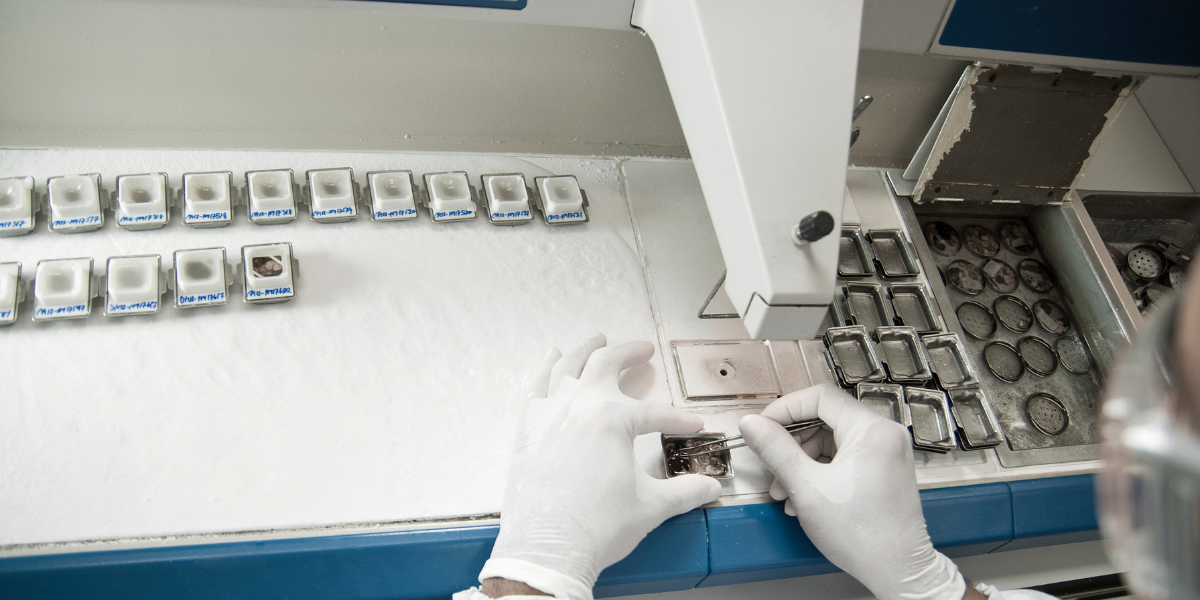An important update is available for FreeStyle LibreLinkØ. Check here for more information.
 Menu
Menu
03 Jul 2019

DNA & RNA extraction often marks the first critical step in determining the genetic causes of diseases and their diagnoses. Without high yield, high purity nucleic acid to process in downstream applications, results become less reliable, reproducible, and ultimately less accurate. This poses a significant problem when it comes to extracting DNA or RNA from formalin fixed paraffin-embedded (FFPE) tissues.
In this article, Mediray explores some of the challenges in cancer biomarker studies with a focus on DNA extraction from FFPE.
DNA Extraction from FFPE: What’s the Problem?
FFPE tissues are tremendously helpful for researchers. They enable the preservation of pathological tissues in sections or cores, allowing large archives of genetically diverse pathological tissue to be banked and called upon in the future. The problem is that this preservation comes at a price. Formalin is a fixative, and fixatives chemically damage tissues. This can cause DNA and RNA to form crosslinks, binding them to surrounding cellular components. On top of this, age-related pH changes can also cause further degradation of this DNA.
Taken together, it’s easy to see how the isolation of high-quality DNA and RNA from FFPE samples at high enough quantities can be challenging. This becomes apparent in cancer biomarker studies where FFPE samples from clinical pathology labs and biobanks provide the best repositories of specimens in high enough numbers for statistical analysis and validation.
Challenges in the Discovery of Cancer Biomarkers
Fuelled by the fire of high throughput technologies, genomic data from a range of different cancers and tissue types have allowed us to glean insights into the complexities of tumor genetics. With each patient’s cancer being unique in its rate of progression and its ability to resist the assaults of chemotherapy, radiotherapy, and surgery, these genomic technologies provide researchers with the tools to lift the lid on the secret life of the cancer cell. This has opened the door for researchers to analyze the genetic profile of an individual’s cancer, driving the field further towards personalized treatment.
Such genomics data is incredibly powerful. With a growing body of genomic data available, it is now possible to rapidly and reliably characterize the molecular profile of an individual’s cancer in the constant search for, and validation of, novel cancer biomarkers. Biomarkers provide the best possible indications for risk assessments, screening, differential diagnoses, prognosis determination, and the validation of correct treatment courses for patients.
However, this genomics data is reliant on the DNA extracted from FFPE tissues which is a major limitation in the pursuit of accurate results. Poor quality samples cannot provide the level of precision expected nor required of next-generation sequencing (NGS). DNA extraction from FFPE tissues is subsequently an inhibiting factor in the discovery and validation of cancer biomarkers for a new age of oncological research and treatment.
Overcoming FFPE Limitations with Mediray
If you’re interested in overcoming these issues, you might like to read our previous blog post Isolating DNA from FFPE Tissue: Challenges & Solutions.
Mediray also offers a wide portfolio of preparation and extraction kits to assist in the acquisition of high-quality samples from FFPE tissues. If you would like to learn more about which of these kits is best suited to your application, please don’t hesitate to contact a member of the team today.
References
Groelz D, S. L. (2013). Non-formalin fixative versus formalin-fixed tissue: a comparison of histology and RNA quality. Experimental and Molecular Pathology, 188-194.
Patel PG, S. S. (2017). Reliability and performance of commercial RNA and DNA extraction kits for FFPE tissue cores. Plos One, doi:10.1371/journal.pone.0179732.
If you enjoyed reading our articles, why not sign up to our blog mailing list? You'll get new articles straight to your inbox as they're released!